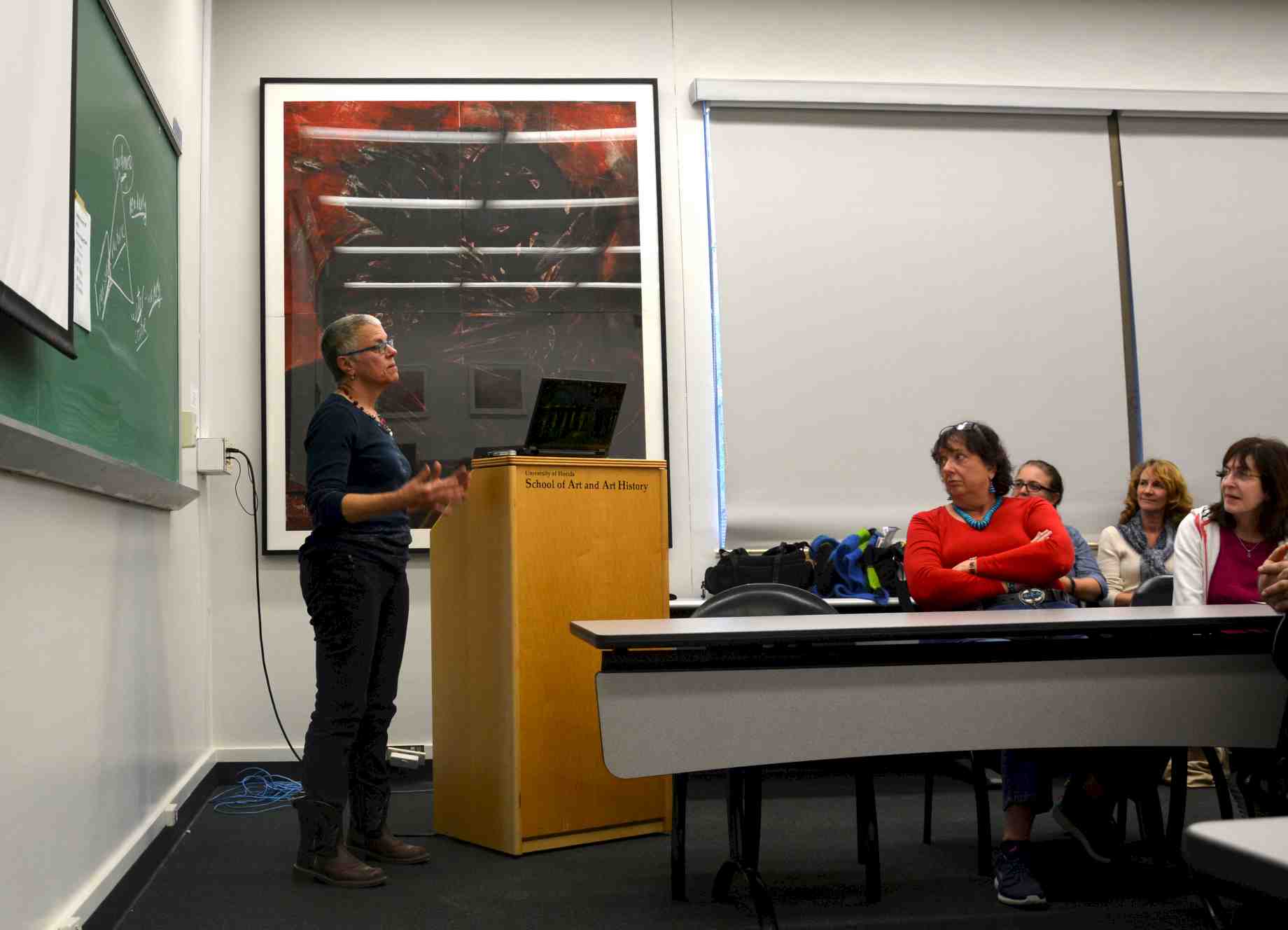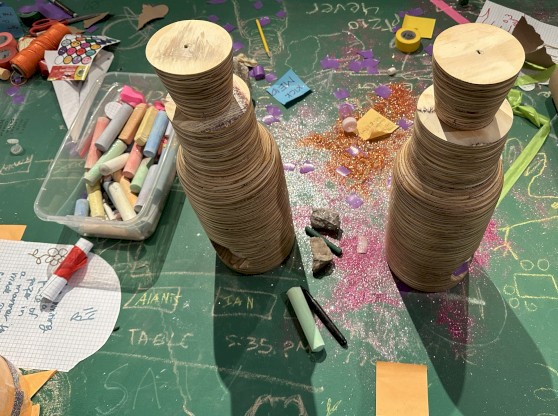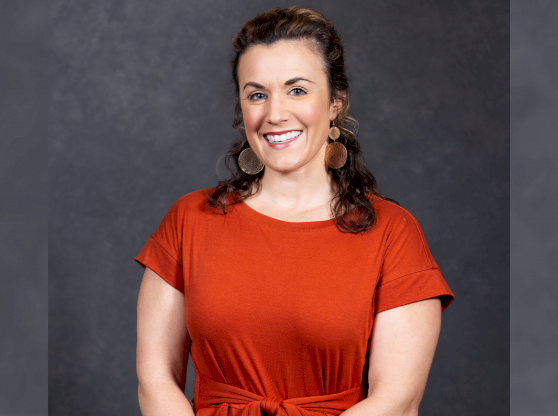Professor Emeritus of Ceramics Linda Arbuckle hosted a presentation and discussion titled "Design and Pottery Surface" where she discussed the past of pottery surface and design and displayed some of her original works. Reflecting back on her life, Arbuckle said she’s always had a love of patterns, even in high school.
“I went to high school during a time that girls took home ed and boys took shop and you were not allowed to switch,” she said. “I learned to sew, and I loved that I could make my own clothing because I could pick the patterns, fabrics and colors.”
She said her childhood growing up in the 1950s, when every house on the block looked the same, made it important for her to customize her everyday life. She said this desire lured her into a career into pottery. As she grew as an artist she began to ponder certain questions about surface design.
“How does meaning get into things?” she asked the audience.
”You put it there,” she answered.
She told the audience that the decisions about certain aspects of a piece gives viewers of the piece’s subconscious signals.
“The decisions that you make about scale, color, format, material and reflectivity, the level of activity, give information to your audience,” she said. “Those decisions are important.”
She also spoke about how surface design is reflected within nature. Using the the example of a picture of a frog and a peacock, she said that surface design can help camouflage or get someone’s attention.
“Once you get somebody’s attention you can give them good news or bad news,” she said. “In the case of this peacock the message is ‘Oh, baby, I am fabulous, and I can be yours.’”
The audience burst out in laughter as she continued through her presentation.
She also said that artists often find themselves in trouble when they attempt to get attention by showing the viewers something controversial. She said that artists who do pottery are mostly giving people good news and something gentle to think about. She said she would advise against giving someone bad news at the dinner table.
She also said that people have unconscious bias towards materials. Using the example of a piece that was made with porcelain, she said that most people would think of royalty when they see the piece.
“If you had seen this at my house and I said ‘Come on over, we’re going to moon pies and koolaid,’ you would think I was tacky,” she said. “So you can either go with the program or challenge the status quo.”
She also gave suggestions to the audience of mostly artists. For example, she suggested when you’re not sure what type of design to add to piece to make several blank pieces and letting another artist mark them up. Afterwards take the pieces and hang them on the wall side by side.
“Everyone will drop what they’re doing in the studio and will be happy to do a makeover on your piece because it’s not their problem,” she said. “We are all better editors than creators. We know it when we see it.”
When discussing her earlier works, she said when she was younger her pieces were based on the summer, which represented her youth. Now a bit older, she said that her works are now more fall themed.
“A lot of my earlier works had florals and were summer themed,” she said. “I woke up and decided it was wasn’t summer, it was sorta fall in terms of stage of life. The leaves are changing colors and falling down but we’re going to have a good time anyway.”



